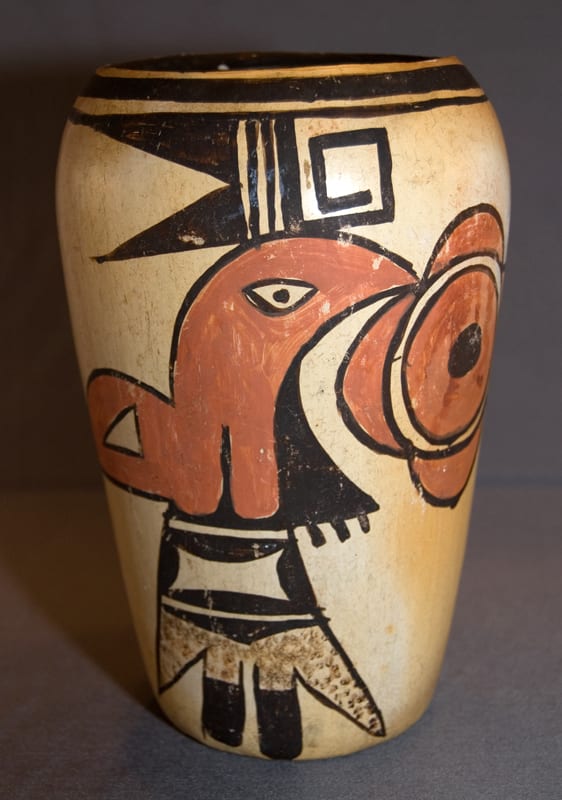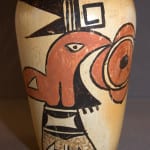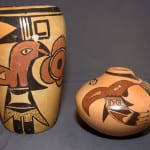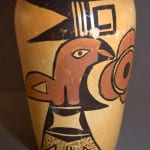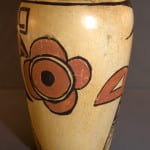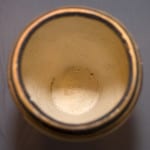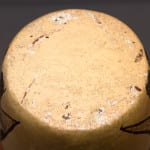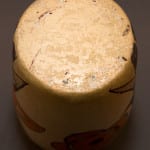This vase has a graceful, flower-like shape with a base of about 3 inches, widening out to a maximum width of 4.75 inches and then curving inward to a mouth of 3.625 inches with an inward-sloping lip of .25 inches. The lip is painted black, as are wide-over-thin framing lines around the mouth. The thin framing line is incorporated into the figural design.
Two four-lobed red flowers are painted on each side of the jar; their centers are a series of concentric circles painted to form a black dot surrounded by a red doughnut form. To the left of each flower is a crested hummingbird with red upper bodies, black torsos and black and stippled tail feathers. On one bird the beak is painted black and is slightly open. The “beak” of the second bird is simply a pointed continuation of the red head. (One wonders of this bird was painted last and the potter simply ran out of room to elaborate the beak.) The wattle of one bird has a plain lower edge; the second bird has a wattle with three lines of fringe. Perhaps these differences distinguish genders; most likely they are simply variations of design. Both birds are poised as if supping nectar from the flower.
When there is sufficient spring moisture at Hopi, the desert explodes with flowers and hummingbirds gather to seek nectar. Thus hummingbirds and flowers are not incidental images at Hopi but represent a longed-for blessing:
A colorful, glittering, flowery paradise….a complex of imagery including flowers, butterflies, colorful birds and rainbows sung into life…not a separate place, like Christian heaven, but a reality that can be brought forth in this world by human prayers, songs and actions…flowers are associated with moisture, because moisture and warmth make flowers grow and bloom, which attract butterflies and birds…In Hopi thought, flowers, birds, and butterflies can also be said to attract moisture, to the benefit of crops and humans. (Hays-Gilpin and Sekaquaptewa, 2006:14)
Such a paradise is “siitalpuva,” a “land brightened with flowers.” Jar 2010-18 is a blessing, and not only because of its beauty.
Jar 2010-18 is painted with a casual folk style, but the image of hummingbirds feeding off a flower is the same as on a more formally-painted jar by Jocelyn Quam Namingha (2010-10).

